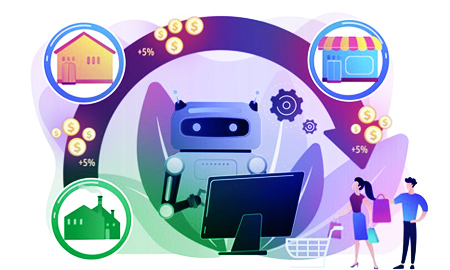In the post-Covid era, Student loan debt collection is dominating the headlines in the U.S. According to the U.S. Census Bureau, nearly 23 million student loans have accumulated to date. With student loans gaining some temporary relief, they will most likely focus on repaying their debts. The key for debt collectors now is to understand how to engage with students that have limited budgets through a variety of economic repayment options.
As students are now rapidly embracing technological advancements and becoming tech-savvy, debt collection agencies must increase their effectiveness to collect student debt in a seamless way. Also, as the effectiveness of traditional communication channels declines, digital communication channels, including consumer self-serve digital debt collection portals, phone, live chat, email, and text messaging, are on the rise.
Let us now see how enabling omnichannel outreach is gaining momentum, making student loan debt collection easier.
Collecting Student Loans
The financial situation of students has been greatly affected by the COVID-19 pandemic and the increasing tuition fees, leading to an all-time high in student debt, particularly in the United States. However, this issue is not limited to the US, as students worldwide face the challenge of expensive higher education. To illustrate, let’s examine some statistics.
- More than half of the students in America must go into debt to pay for their college, and the average student loan debt in 2020 totalled $37,500.
- In 2020, the amount of student loan debt across the United States saw a rise of 8.3%.
- As of 2020, the total amount of student loan debt in the United Kingdom exceeded 135.62 billion British pounds.
- In Germany, the number of accessible student employment has dropped because of COVID-19, resulting in a spike of 641.6 million euros in student loan applications.
The situation is only deteriorating. Recent graduates are failing to find work following the COVID-19-induced economic crisis, which means they cannot afford to pay off their debts. If collections teams want to keep student debts from developing into non-performing loans (NPLs), they must change their approach.
This blog will look at how collection departments can efficiently communicate with past-due consumers who have student loans.
A brief narrative of student debt in the US
It might be a surprising fact to learn that student loan debt is far from a new issue. Almost 181 years ago, the first student loan was issued back in the 1840s to students studying at Harvard. In 1965, the Higher Education Act was established to give students in need of financial assistance access to “Educational Opportunity Grants.” The act also introduced the Guaranteed Student Loan Program, which allowed private institutions and banks to offer government-funded loans to students, commonly known as the Federal Family Education Loan Program (FFELP).
This was a considerable success. However, back in 2008, the Great Recession struck, which forced multiple banks and other lending institutions to back out from the FFELP, as they did not have the financial capacity to provide student loans. Also, the year 2021 is also considered to be a remarkable year for student debt, though for all the wrong reasons. Many graduates nowadays are facing an increasing amount of debt that they can hardly pay off, as it is becoming more challenging to secure decent-paying jobs. Furthermore, economists project that inflation will surge in the coming years, further adding to the difficulties of making prompt loan repayments.
Student loan debt collection agencies must respond by making it simpler for students to pay back what they owe. In addition, they must offer flexible instalment plans and self-service options, catering to past-due customers’ needs and smoothly guiding them through the debt collection process.
Introducing Omnichannel Communications for Debt Collection
When it comes to customer communication, using an omnichannel approach means more than just offering multiple channels. The main advantage of an omnichannel approach is that it connects all the different touchpoints together, providing a consistent and unified experience for the customer, regardless of the path they choose to take.
This not only improves control over how customers are treated, but it also simplifies the collection of behavioural data, which can be used to improve performance through data analytics. Compared to using multiple separate delivery channel software, an omnichannel platform is much more efficient and effective.
Collection of Student Loans—The Right Way!
To cope with the current economic challenges caused by increased debt, a more competitive job market, and rising inflation, innovative solutions are necessary. In addition, recent graduates not only encounter unexpected obstacles but also exhibit distinct behaviours compared to previous generations.
It is crucial to adopt a fresh approach and prioritize effective communication with past-due customers. The collections process involves a dialogue between you and your customers, and clear and effective communication is essential for their engagement.
Sending blunt and aggressive letters via postal mail is no longer an effective strategy. In fact, this approach may cause customers to avoid the issue and feel overwhelmed by their financial problems.
So, what’s the right approach?
-
Leverage omnichannel communication strategies
In today’s age of advanced communication, there are numerous ways to reach out to customers who are behind on payments. Utilizing digital communication channels can be especially productive. According to recent research by McKinsey, prioritizing digital communication in collections strategies can reduce non-performing loans by 20 – 25% compared to traditional methods and result in 5 times higher customer engagement.
There is no definitive answer when it comes to determining the best digital communication channel for every customer. It is important to consider that some customers may prefer email while others may prefer SMS. It is recommended to experiment with different options and determine which channels work best for each segment and for each individual customer who has missed a payment.
-
Tailored messaging
It is not enough to deliver communications through the appropriate channels. The incorrect message on the appropriate channel is insignificant. So, if you want to improve your collections strategy, you must adapt your messaging to each past-due consumer.
This is an excellent concept; however, it is tough to implement at scale. Unless, of course, you utilize artificial intelligence (AI). The multi-armed bandit (MAB) method driven by AI lets you send out the optimal message at the correct time. You begin with a variety of messaging templates, and when responses come in, the algorithm prioritizes the template with the greatest response rate and sends it out at the optimal delivery time.
By utilizing MAB, agents can dedicate more time and effort to high-priority accounts that necessitate human interaction.
-
Embrace self-service
Today’s customers like to fix their own problems. They do not want to be held in a call queue until the next agent that is available is available. They prefer to address problems on their own and in an efficient way.
Past-due customers are significantly more likely to pay back what they owe if given control of the process. Contact them through the proper channel with the relevant message and urge them to pay a visit to your self-service payback landing page. You could also include a QR code on the landing page to make this process even easier.
Allow them to build a bespoke instalment plan and offer them control over the entire payback process. This can prevent reactance, a phenomenon in which past-due clients refuse to pay to feel in control of the debt payback process.
Adapt your debt collection approach for the modern world.
Paying off student debt has become a challenge for today’s college graduates due to economic instability and increasing inflation rates. However, you can prevent most student debts from turning into NPLs by adopting modern dunning methods.
One of the ways to achieve this is by using omnichannel communication strategies that allow you to connect with consumers on their preferred channels at the right time. Personalize your messaging to address each individual customer instead of sending out generic messages. You can also offer self-service channels that give past-due customers more control over the process.
Luckily, Vital Solutions provides all these abilities and many others. Contact us today to discover more about what we offer.



